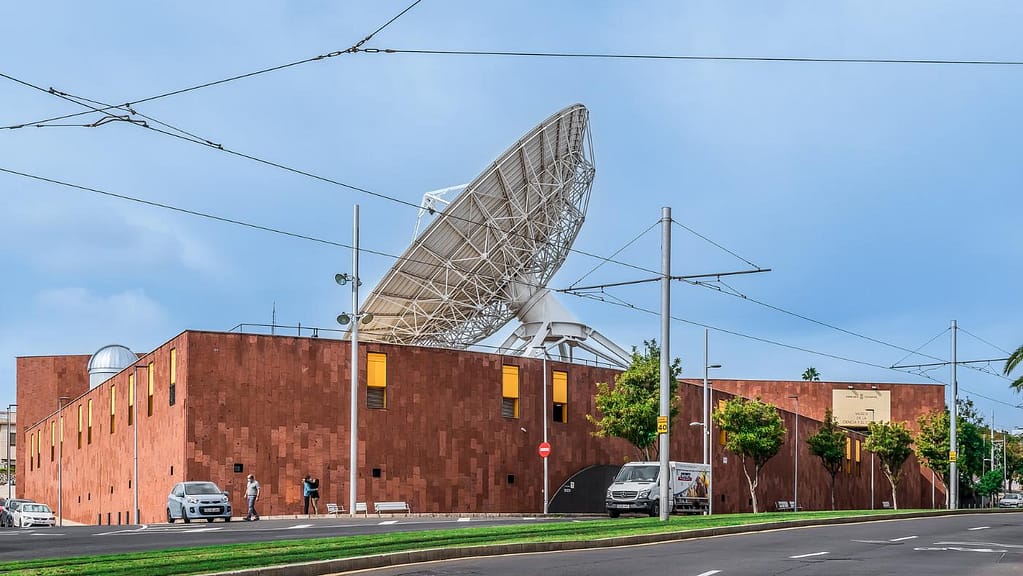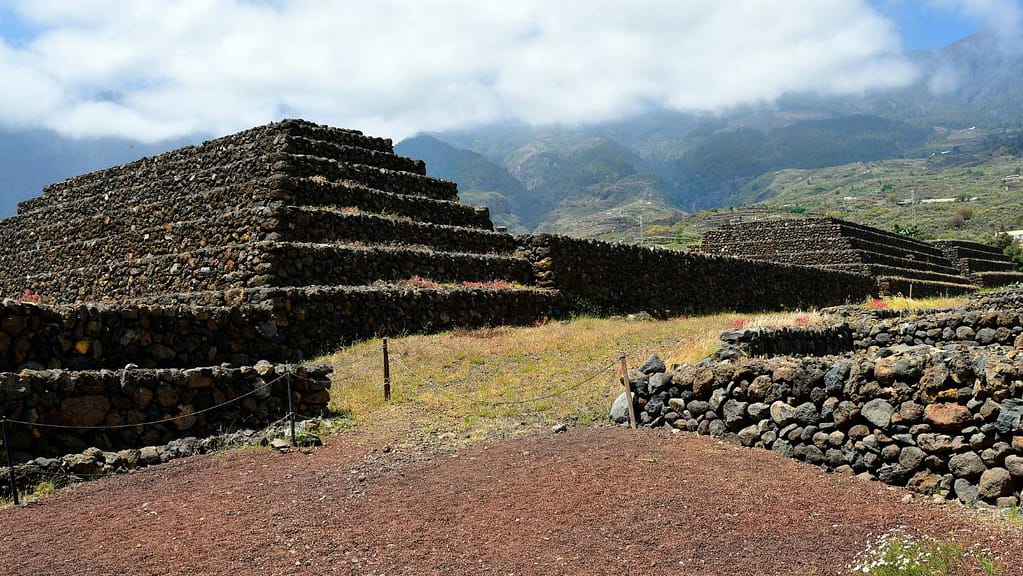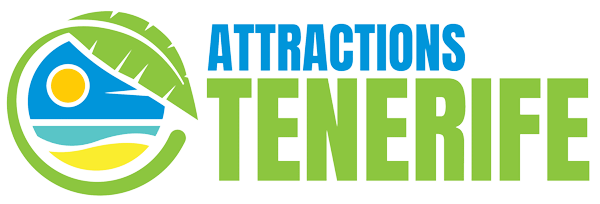Estimated reading time: 12 minutes
Museum of Science and the Cosmos Tenerife: A Fascinating Journey Through the Universe
Experience the mysteries of the universe with a visit to the Museum of Science and the Cosmos in Tenerife. Discover the laws of nature in a fun and interactive way!
As someone who has always been fascinated by science and the mysteries of the universe, I was thrilled to visit the Museum of Science and the Cosmos in Tenerife.
Located in the Canary Islands, this unique museum offers visitors a chance to explore the laws and principles that govern nature in a fun and interactive way.
What sets the Museum of Science and the Cosmos apart from other museums is its blend of traditional museum exhibits and theme park attractions.
From the workings of the human body to the movements of the stars, visitors of all ages can learn about science in a way that is both educational and entertaining.
The planetarium, in particular, is a must-see attraction, with its impressive 6.5-meter diameter dome and state-of-the-art projection systems.
History of the Museum of Science and the Cosmos

Inception
I was fascinated to learn about the history of the Museum of Science and the Cosmos in Tenerife. The museum was opened in 1993 and is located in the city of San Cristóbal de La Laguna on Tenerife island, which is part of the Spanish Canary Islands.
The museum was founded by the Cabildo de Tenerife, which is the governing body of the island. The museum’s goal was to promote science and technology education and to make it accessible to everyone.
The museum was designed by the architect Antonio Fernández Alba, and it was built on the site of an old tobacco factory. The building’s design reflects the museum’s focus on science and technology, with its futuristic design and use of modern materials.
Development

Over the years, the Museum of Science and the Cosmos has grown and developed, adding new exhibits and programs to its offerings. In 2002, the museum opened a new wing dedicated to the study of the universe, which included a planetarium and an observatory.
The planetarium is one of the most advanced in Europe, with a 3D projection system that allows visitors to experience the wonders of the universe in a unique and immersive way.
In 2012, the museum added a new exhibit on the history of science and technology in the Canary Islands, which explores the contributions of the islands to the fields of astronomy, navigation, and agriculture.
The exhibit includes interactive displays and hands-on activities that allow visitors to learn about the history of the islands in a fun and engaging way.
The Museum of Science and the Cosmos has also been involved in many research projects over the years, including the study of the Güímar Pyramids, which are located in the municipality of Güímar on Tenerife island.
The museum’s researchers have been studying the pyramids since 1991, and their work has shed new light on the history and culture of the Canary Islands.
Permanent Exhibition in Museo de la Ciencia y el Cosmos
As I explored the Museum of Science and the Cosmos in Tenerife, I was fascinated by the permanent exhibition that is divided into different areas. The museum invites visitors to play with science and discover it as part of everyday life.
The permanent exhibition is divided into several sub-sections, including:
The Universe

The Universe sub-section is one of the most impressive areas of the museum. Visitors can explore the laws of nature that govern the Universe, and learn about the stars, planets, and galaxies.
The exhibition includes a 360-degree digital projection using Digistar 5, which is one of the most advanced types of planetarium projection systems. Visitors can also observe the Sun and explore the mysteries of dark matter and dark energy.
The Human Body

The Human Body sub-section is another fascinating area of the museum. Visitors can learn about the anatomy and physiology of the human body, and explore how the body works.
The exhibition includes interactive exhibits that allow visitors to explore the different systems of the body, such as the respiratory, circulatory, and nervous systems. Visitors can also learn about the effects of exercise and diet on the body.
Planetarium

As I entered the Museum of Science and the Cosmos, I was immediately drawn to the planetarium. It is one of the highlights of the museum, and I was excited to learn more about astronomy and the universe.
Planetarium Shows
The planetarium shows at the Museum of Science and the Cosmos are a must-see for anyone interested in astronomy. The shows are designed to educate and entertain visitors of all ages, and they cover a wide range of topics related to the universe.
During the shows, I learned about the sun, planets, stars, and other celestial bodies. The visuals were stunning, and the narration was informative and engaging.
I was amazed by the sheer size and complexity of the universe, and I left the planetarium with a newfound appreciation for astronomy.
Planetarium Sessions
In addition to the planetarium shows, the museum also offers planetarium sessions. These sessions are designed for visitors who want to learn more about specific topics related to astronomy.
During my visit, I attended a planetarium session on the constellations. The session was led by a knowledgeable astronomer who explained the history and mythology behind each constellation.
I also learned how to identify some of the most prominent constellations in the night sky.
Educational Workshops in the Museum of Science and the Cosmos in Tenerife
As I explored the Museum of Science and the Cosmos, I discovered that they offer a range of educational workshops for both children and adults. These workshops are designed to be interactive, engaging, and fun, while also providing valuable learning experiences.
For Children

The Museum of Science and the Cosmos offers a variety of educational workshops for children of all ages. These workshops are designed to be age-appropriate and cover a range of topics related to science and technology.
Some of the workshops available for children include:
- Space exploration;
- Robotics;
- Renewable energy;
- Astronomy.
These workshops are led by experienced educators who are passionate about science and technology.
They use a variety of teaching methods, including hands-on activities, experiments, and group discussions, to engage children and help them learn.
For Adults

The Museum of Science and the Cosmos also offers educational workshops for adults who are interested in learning more about science and technology. These workshops cover a range of topics and are designed to be accessible to people with varying levels of knowledge and experience.
Some of the workshops available for adults include:
- Climate change;
- Artificial intelligence;
- Quantum mechanics;
- Genetics.
These workshops are led by experts in their respective fields, who can provide in-depth knowledge and insights. They use a variety of teaching methods, including lectures, discussions, and hands-on activities, to engage adults and help them learn.
Temporary Exhibitions in the Museum of Science and the Cosmos, Tenerife

As I walked through the Museum of Science and the Cosmos, I was pleasantly surprised by the variety of temporary exhibitions on display. The museum frequently updates its exhibitions, which means that there is always something new to see.
One of the temporary exhibitions that caught my eye was the one on robots. It was fascinating to see how far technology has come and how robots are being used in different industries.
The exhibition featured interactive displays, which made it engaging for visitors of all ages.
Another interesting temporary exhibition was the one on biodiversity. It was informative and educational, and I learned a lot about the different species that inhabit our planet.
The exhibition showcased the importance of preserving our planet’s biodiversity and the role that we can play in doing so.
In addition to the exhibitions, the museum also hosts informative talks on various topics related to science and technology. These talks are a great way to learn more about a particular subject and to engage with experts in the field.
Experiences

As I explored the Museum of Science and the Cosmos in Tenerife, I found that the experiences offered were truly unique and engaging. The museum invites visitors to play with science and discover it as part of everyday life.
One of the most fascinating experiences was the planetarium, equipped with two systems that project images onto a 6.5-metre diameter dome. It was one of the most practical and inspiring tools for studying astronomy.
The show was informative and interactive, allowing me to learn about the stars and planets in a fun and engaging way.
Another experience that stood out to me was the interactive exhibits. These exhibits allowed me to experiment with science and technology in a hands-on way.
For example, I was able to control a robot and learn about its functions and programming. I also had the opportunity to explore the human body and learn about its functions and systems.
The museum also offers a mobile app that enhances the experience by providing additional information and interactive features.
The app includes a map of the museum, information about the exhibits, and a quiz game that tests your knowledge about science and the cosmos.
Other Museums in Tenerife
If you’re interested in exploring more museums in Tenerife, there are several other options to choose from. Here are a few that I recommend:
Museum of Nature and Archaeology

The Museum of Nature and Archaeology, located in Santa Cruz de Tenerife, is a great place to learn about the natural history of the Canary Islands. The museum has a wide range of exhibits, from fossils and minerals to plants and animals.
There are also exhibits on the indigenous Guanche people who lived on the islands before the arrival of the Spanish.
One of the highlights of the museum is the Guanche mummies, which are on display in a special exhibit. These mummies were discovered in a cave in Tenerife in the early 20th century and are believed to be around 1,000 years old.
The museum also has a large collection of Guanche pottery, as well as artefacts from other ancient cultures that inhabited the islands.
La Palma

La Palma is a small island located to the west of Tenerife. While it’s not technically part of Tenerife, it’s still worth a visit if you’re interested in museums.
The island has several interesting museums, including the Insular Museum, which has exhibits on the history and culture of La Palma.
Another museum worth visiting is the Casa Museo del Vino, which is dedicated to the island’s wine industry. The museum has exhibits on the history of wine production in La Palma, as well as a tasting room where you can sample some of the island’s best wines.
Teide National Park

While not a museum per se, Teide National Park is a must-visit destination for anyone interested in the natural history of Tenerife. The park is home to Mount Teide, which is the highest peak in Spain and one of the largest volcanoes in the world.
Several hiking trails in the park allow you to explore the unique landscape, which includes lava fields, craters, and other volcanic features. Visitor centres in the park have exhibits on the geology and ecology of the area.
Plan Your Vacation with these useful links
- Find a flight
Kiwi.com – Helping you to find the cheapest airline tickets.
- Find an accommodation
Welcome to Tenerife. Enter your check-in date and choose from 9628 properties with Booking.com!
- Order taxi transfers from airports and hotels
Kiwi Taxi. Immediate departure, the driver meets you, pay online or in cash.
- Book Your Activities
Top sights you can’t miss in Tenerife! GetYourGuide.
- Rent a Car: Search, Compare, Save
Join now the many satisfied customers of Rentalcars.com – the leading car rental comparison website around the world. Only 3 steps separate you from “four wheels”!
- Ekta – is a new-generation insurance company that combines competitive prices with a high level of service.
You will receive your insurance policy by email within 2-3 minutes. There is a multilingual technical support chat 24/7.

